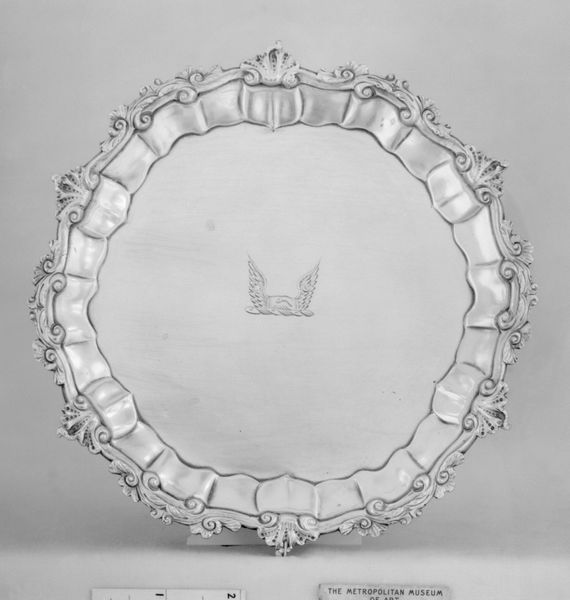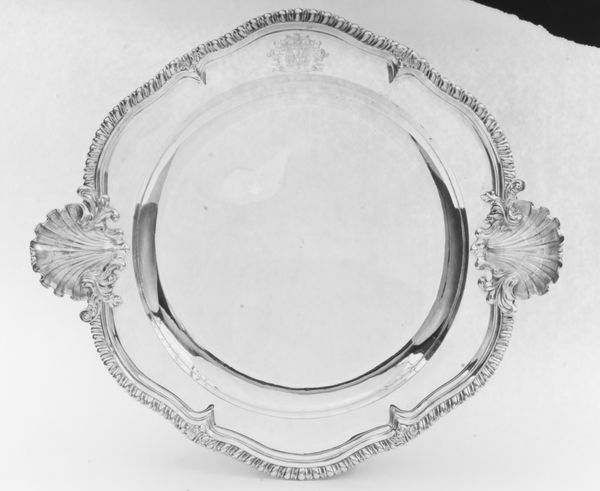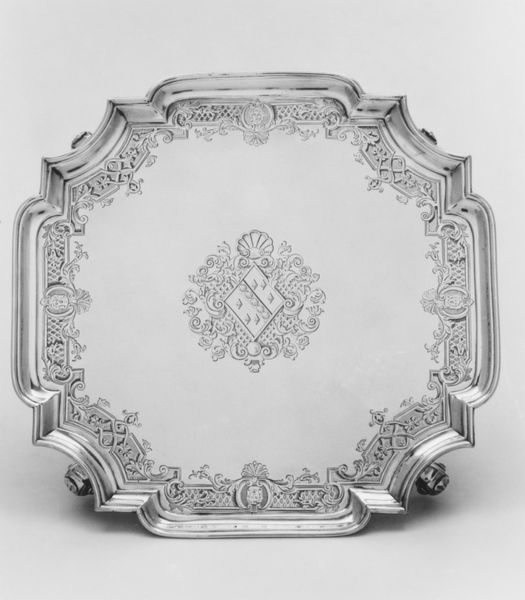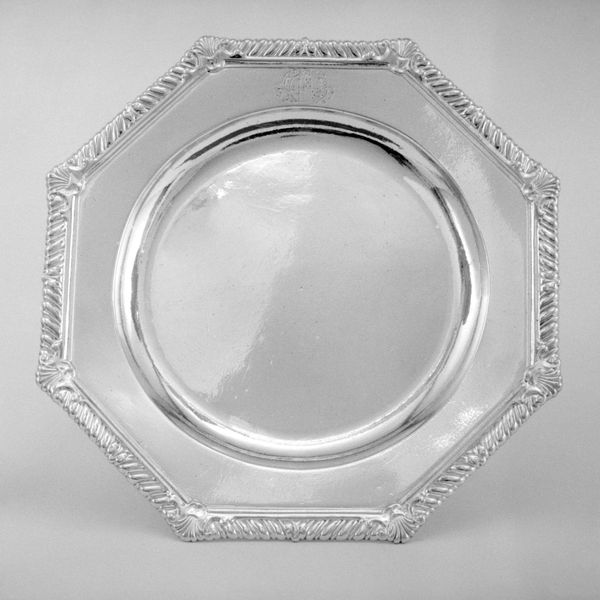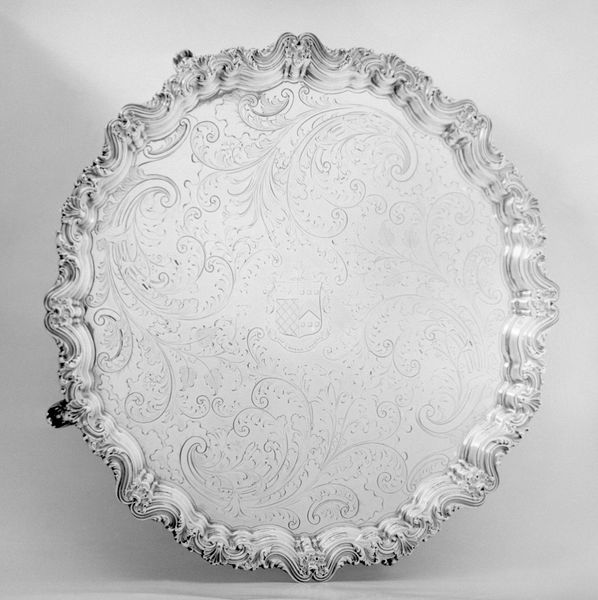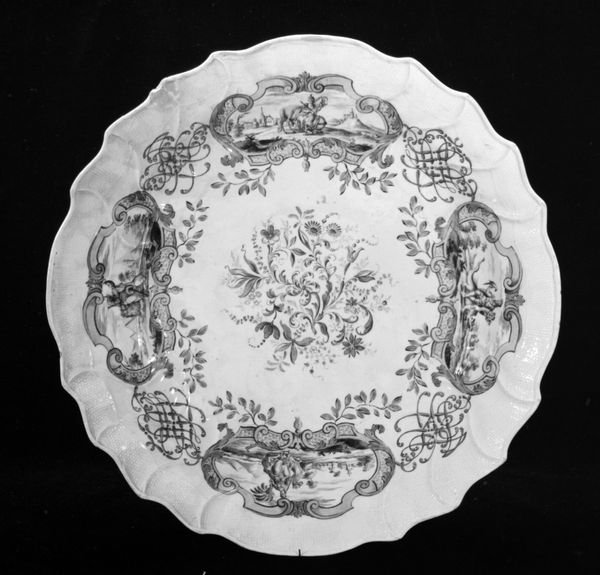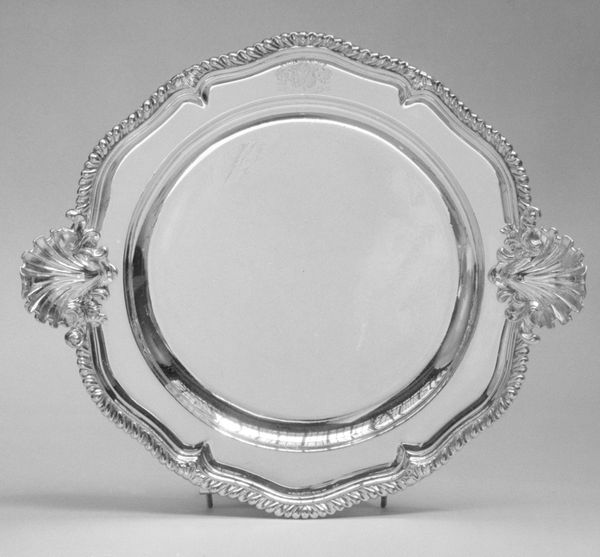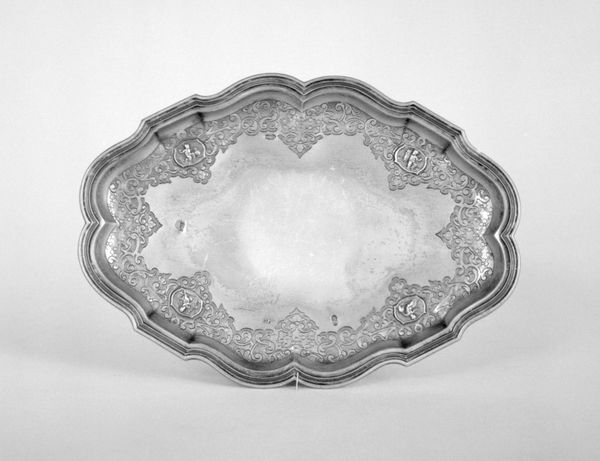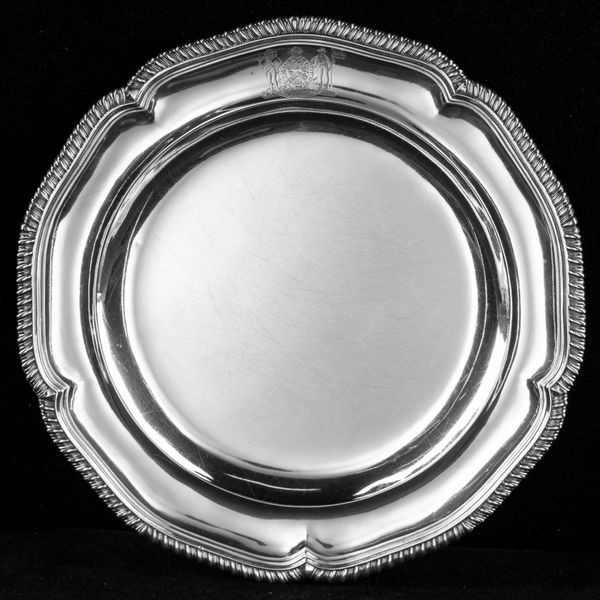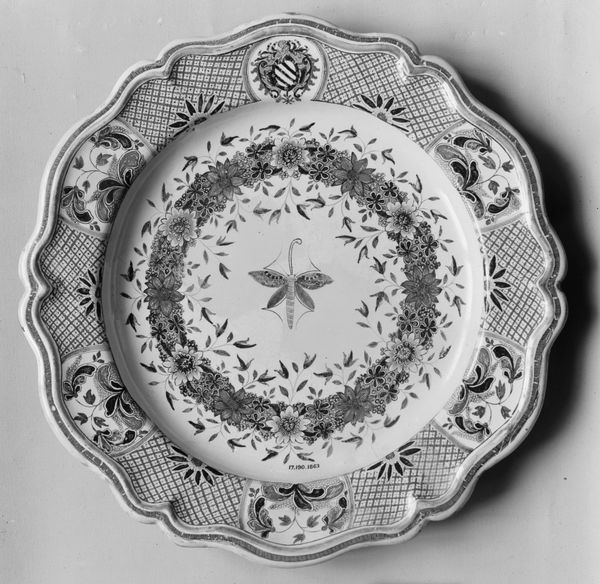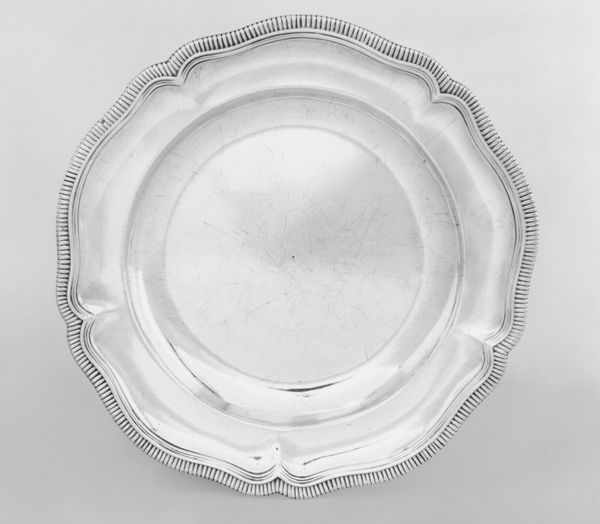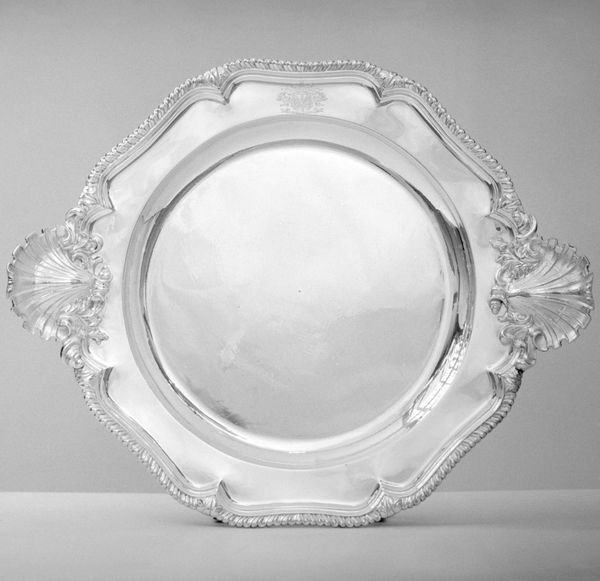
silver, metal, sculpture
#
silver
#
baroque
#
metal
#
sculpture
#
sculpture
#
decorative-art
#
rococo
Dimensions: Diameter: 19 1/4 in. (48.9 cm)
Copyright: Public Domain
This silver salver was made by George Wickes, a prominent London silversmith, sometime before his death in 1761. Wickes, later succeeded by John Parker and Edward Wakelin, was the principal supplier of silver to Frederick, Prince of Wales, and his commissions reflected the tastes of London’s elite. The engraved heraldic shield on the salver speaks to the importance of lineage and social status in 18th-century Britain. These visual symbols were a shorthand for wealth, power, and belonging, and they reinforced the hierarchical structure of society. The salver itself, used for serving food and drink, would have been a centerpiece of social rituals, further displaying the family's status and wealth. Understanding this piece requires us to delve into the social and economic history of the time, looking at sources like guild records, family papers, and inventories to piece together the lives and values of those who commissioned and used such objects. The meaning of art is always contingent on the social and institutional context in which it was made and used.
Comments
No comments
Be the first to comment and join the conversation on the ultimate creative platform.
